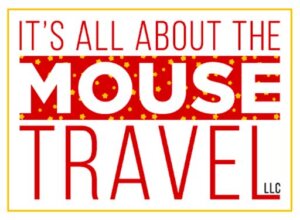Hard Things You Have to Do to Be a Great Leader: Part Four
Congratulations! You made it!
No, not to the end of 2020 (although the end of this endless year is finally in sight). To the end of our popular four-part series “16 Hard Things You Must Do to Be a Great Leader.” It’s been a great series, and you can review each of the previous three articles from the past two months here: Part One, Part Two, Part Three
Today, we wrap everything up by looking at the final four lessons, numbers 13-16. Lots of good stuff with great Disney stories, so let’s get going:
13. You have to deliver results when making excuses is an option—
The most important event in the development of Disney theme park attractions didn’t happen at Disneyland or Walt Disney World. No, it happened at the 1964-65 New York World’s Fair. Walt agreed to design four attractions for the East Coast exhibition: Great Moments with Mr. Lincoln, The Ford Magic Skyway, Progressland (Carousel of Progress), and “it’s a small world.” In return, Walt could bring the shows, along with the research and technology (all paid for by various corporate sponsors), back home to Disneyland, and he had a chance to explore the viability of developing an “East Coast Disneyland.” Before the New York World’s Fair, many believed Disneyland’s success was simply a West Coast, California, LA phenomenon…. Good luck getting the more mature, cultured tastes back East and in the Big Apple to bite.
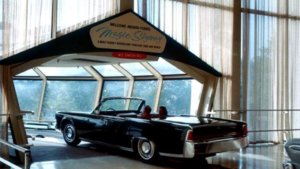
Over the fair’s two-year run, Walt’s four shows were easily the fair’s most popular attractions. It would have been easier for Walt to say “no” from the start. After all, New York was home to the very banks, networks, and corporations that said “no” to him and his dream for Disneyland a decade earlier. After signing on, no one said Walt had to do more than one show, let alone four. Walt and his team of Imagineers were already overwhelmed with their work on developing the first three shows when they were given the opportunity to develop a fourth, “it’s a small world,” with less than a year before opening. Walt and his team of Imagineers had every excuse in the world to say “no.” Instead, they jumped at the chance and said, “Yes!”
Stop making excuses. Start saying “Yes!” Watch the results that follow….
“We’ve proved we can do it with Disneyland…. This is a great opportunity for us to grow. We can use their financing to develop a lot of technology that will help us in the future. And we’ll be getting new attractions for Disneyland too.”
Walt Disney Commenting on the 1964-65 New York World’s Fair
14. You have to make mistakes and look like an idiot—
However, not everything at the 1964-65 New York World’s Fair started out shiny for Walt. Using the technology from the Enchanted Tiki Room that had opened just one year earlier, Imagineers were now stretching themselves to develop the first full-sized audio-animatronics figure in the form of America’s sixteenth President, and Walt Disney’s boyhood hero, Abraham Lincoln. Created for the State of Illinois Pavilion, the “winkin blinkin Lincoln” worked flawlessly when it left the Disney studio in Burbank but hardly worked at all once it landed three thousand miles east for its ongoing two-year engagement in New York City.
Was it jet lag? Was it errant and erratic electric currents…possible interference from the opening of Shea Stadium and the Mets playing night games across the street from the fairgrounds?
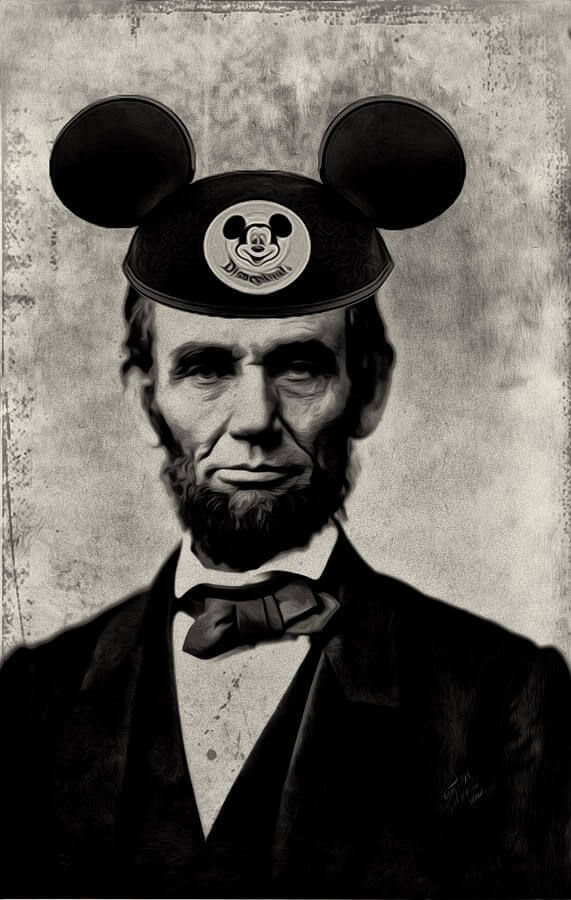 Regardless of the reason, on the night of the press premiere, the robot was not ready. Instead of auditioning the world’s first full-sized audio-animatronics figure, Walt had to go out and apologize to the media for his mistake. “There isn’t going to be any show…. We’ve worked like beavers to get it ready, but it’s not ready, and I won’t show it to you until it is.”
Regardless of the reason, on the night of the press premiere, the robot was not ready. Instead of auditioning the world’s first full-sized audio-animatronics figure, Walt had to go out and apologize to the media for his mistake. “There isn’t going to be any show…. We’ve worked like beavers to get it ready, but it’s not ready, and I won’t show it to you until it is.”
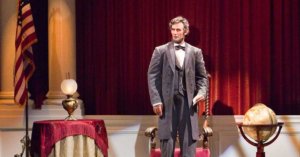 Great Moments with Mr. Lincoln opened two weeks late. However, once it finally premiered, it became a “must-see” at both the New York World’s Fair and eventually Disneyland, and it was the inspiration for the stunning, and fuller version, at Walt Disney World aka The Hall of Presidents, which was an Opening Day attraction on October 1, 1971.
Great Moments with Mr. Lincoln opened two weeks late. However, once it finally premiered, it became a “must-see” at both the New York World’s Fair and eventually Disneyland, and it was the inspiration for the stunning, and fuller version, at Walt Disney World aka The Hall of Presidents, which was an Opening Day attraction on October 1, 1971.
It’s okay to take that risk. Leaders need to lead their teams out on that limb. Remember, that “experience is the name everyone gives to their mistakes.”
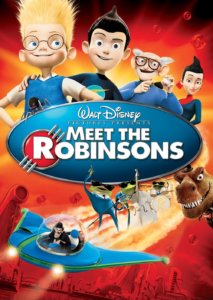
15. You have to keep moving towards where you want to be no matter what’s in front of you—
For this one, I’m going to give you a little homework. (We professors do that.) Stop reading and go watch the Disney computer-animated movie Meet the Robinsons. If you have already seen it, that’s okay. Go watch it again.
I’m going to spoil the ending for you. Here is the final scene right before the end credits roll: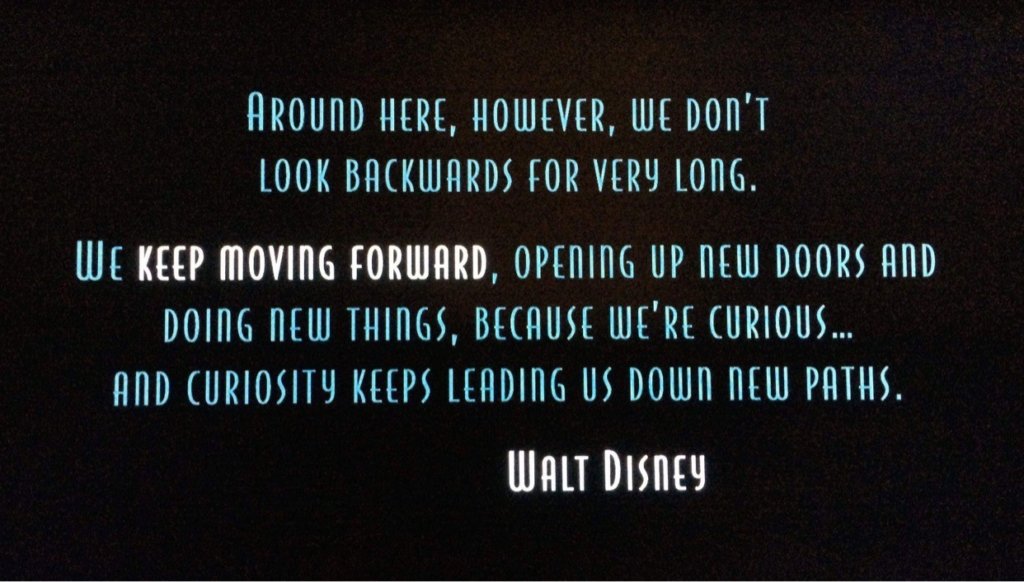
What is in front of you right now? What fear are you facing that is keeping you from moving forward? I want to challenge you to flip that fear, and instead of focusing on what you might lose, get curious and ask yourself, “What might I gain by moving forward?” Lead like Walt Disney and live from a greater place of both courage and curiosity.
16. You have to try and fail and try again…. I repeat…You have to try and fail and try again—
It’s been more than fifty years since Walt Disney died. Today, what we remember is all of his success—the world’s most popular (and profitable) cartoon character, Mickey Mouse. The world’s first full-length animated feature film, Snow White and the Seven Dwarfs, and his impossible dream for a magical place called Disneyland.
Along the way, and more than five decades later, we have forgotten all of Walt Disney’s failures. The bankruptcy in Kansas City that compelled him to come to California. The loss of Oswald the Lucky Rabbit that led him to make Mickey Mouse. The Burbank City Council turning down his diminutive 8-acre dream for an outdoor entertainment enterprise called Mickey Mouse Park that forced him to dream bigger and develop Disneyland out of 160 acres from an orange grove in Anaheim.
The only difference between Walt’s failures and yours is that Walt learned to leverage his failures to move him forward. Whether it was a failed circus in the backyard of his childhood home, or a failed circus at his beloved Disneyland, Walt never stayed stuck, and he never went backward.
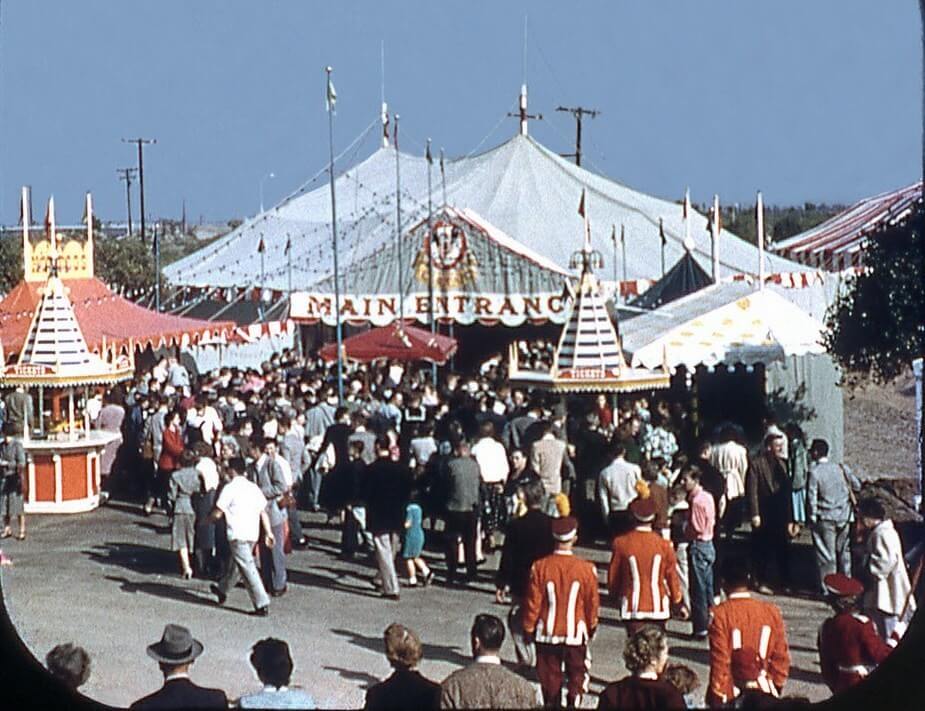
You can do the same. Failure only comes when you finally stop trying. Until then, Never Give Up!
“Walt never thought he was beaten at anything—ever.”
— Lillian Disney
This brings our four-part series to a close. I hope you enjoyed reading it as much I’ve enjoyed researching and writing it. As always, let me know which of these four points is your personal favorite. Please be sure to share and comment. Have a safe and Happy Halloween. The Wisdom of Walt will be back again in November!

